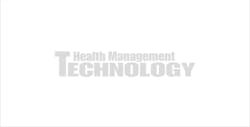The creative intersection of medicine and technology
Medicine is not often thought of as a creative industry; we focus instead on science and evidence. Behind the science is a group of driven individuals who are focused on problem solving.
The patient’s chart is a collection of information and a record of the thoughts and decisions of those who interact with patients. Gone is the day of a description of a patient’s ailments, the physician’s thoughts, and evidence to support the diagnosis and treatment plan. The medical record was a place to follow the often winding path of patient care.
Medical documentation records the history of a patient’s illness, and the interventions instituted on the path to healing. It is something physicians take seriously, not only to meet legal and professional obligations, but also to record our thoughts. The record captures the creative side of medicine.
We are all practicing within a system of medicine that occurs at the individual level, but has greater impact with others when viewed from a system-level perspective. Medical records were neither developed as a tool for population health management nor to allow for the sharing of data, however, today’s EMRs have been developed to support care for the masses.
So how do we capture the creative thoughts of medical professionals and yet make use of EMRs?
I enjoy technology and relish using the technical tools I work with, consciously making decisions on what tools I use. When I struggle with an application, I search for a better solution. One of my goals in healthcare is to find a way to do the same things when presented with tools and technology that do not fit into my workflow. Discovering problems and identifying ways to circumvent them are as important in healthcare as in any other business.
Many any of my colleagues and I find their relationship with EMRs to be constraining to our management of patients. These complaints are often directed at the EMR’s themselves and the restrictions they place on user input and the cumbersome interfaces needed to navigate to the patient’s information. Each EMR system has its own constraints that challenge medical providers. We are stymied by having to navigate multiple systems to reconstruct patient data into a story that has meaning and allows for the management of care.
Although EMRs have some customization, it is neither easy nor welcomed by hospital IT to mess with these complex systems for fear they will break other components. This raises questions about the stability and the expandability of EMR systems to meet current and future healthcare needs.
When I look at the systems and their interdependent parts, I cannot help but think there must be another way to address these issues. We all think about interoperability and the development of systems that maintain the integrity of data while allowing medical professionals to use their knowledge of patient care to develop tools.
I see the future of EMR’s to be much like the creation of an App Store-like concept, enabling healthcare to solve workflow problems from within. The new 2.0 software platforms with open APIs that enables this sort of development is encouraging. By opening EMR extensions, connectivity will allow creative people within healthcare to solve many of these problems and solutions will come from those in the trenches. We will not need to wait for the EMR industry to see our issues and add them to the next software release.
The challenge of interoperability is great, but open API’s encourage me to explore the possibilities of impacting healthcare from the inside. Validating the potential of a cross-platform application that integrates with multiple EMR’s may just be the trigger to restore hope. It provides physicians with a platform to turn their frustrations with EMR’s into productive outlets for improving patient care by creating new experiences and optimizing their workflows.
As an example, I am an anesthesiologist working to prove the concept that physicians can productively address the constraints and limitations with healthcare technology by developing an OR management app to address workflow and patient management issues in the preoperative period. I looking forward to working with others in healthcare to define and develop new solutions to patient management. Overcoming the barriers and limitations of healthcare technology are not insurmountable when you engage and inspire others that solutions are possible.


